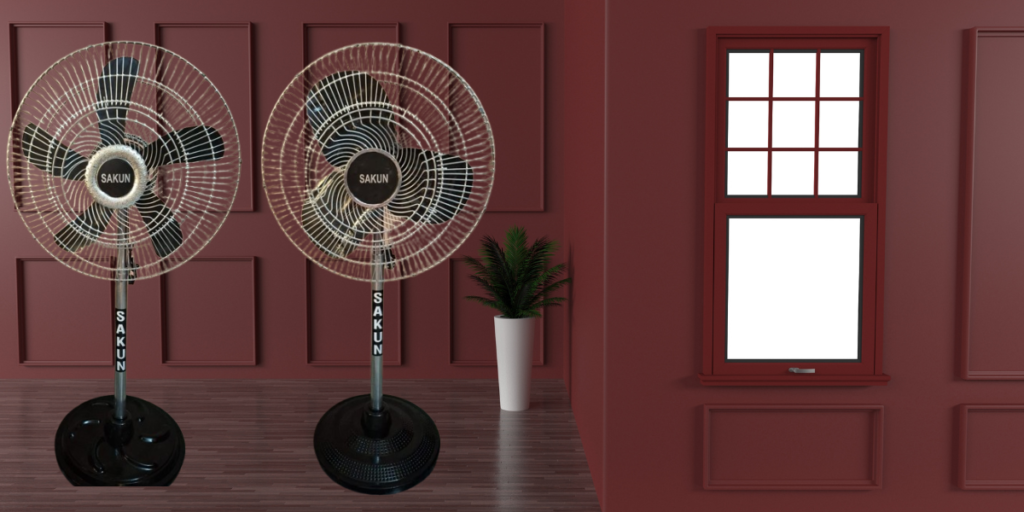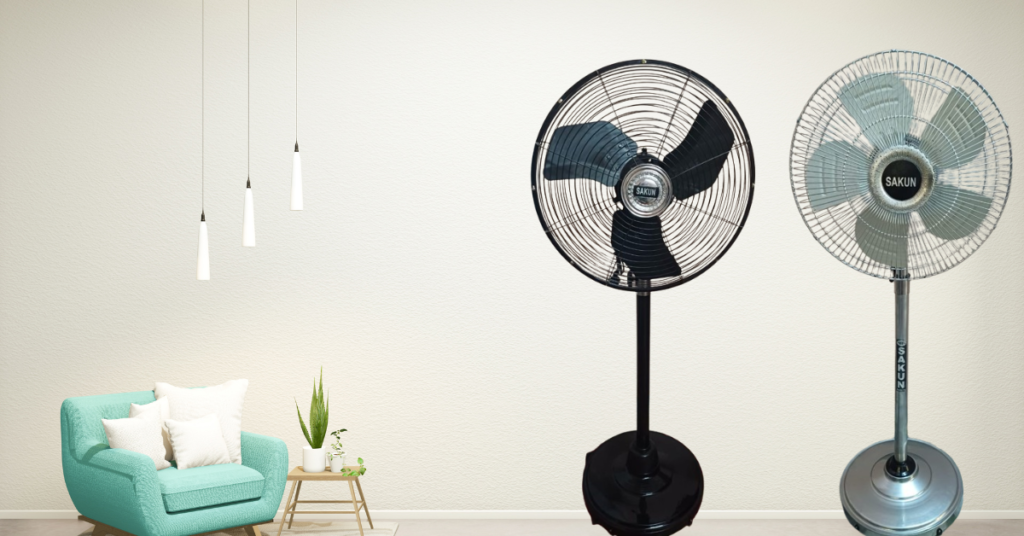Transformation of ceiling fans to Bldc ceiling fans
Ceiling fans are one of the most common items in homes and offices, as they provide affordable cooling solutions. Energy-efficient ceiling fans have been advanced in 2025, with superior airflow at reduced electricity consumption. Rising energy costs and increased focus on sustainability make investing in an energy-efficient ceiling fan a smart decision. This guide will help you choose the best ceiling fans that save energy and reduce your carbon footprint
How to Select an Energy Efficient Ceiling Fan?
- Motor Type Counts
DC Motor vs. AC Motor: DC motors are far more energy-efficient, using up to 70% less energy than conventional AC motors.
BLDC (Brushless DC) Motor: It gives ultra-quiet operation and maximum efficiency.
- Blade Design and Material
Aerodynamic Blade Shape: Increases airflow with minimum energy consumption.
Number of Blades: Generally, models with 3-4 blades are more efficient than those with 5+ blades.
- Size and Room Suitability
Small Rooms (Up to 100 sq ft): Use a fan with a 36-inch diameter.
Medium Rooms (100-300 sq ft): 42-52 inch fans.
Large Rooms (300+ sq ft): 56 inches or more for best air circulation.
- Energy Certifications to Look For
ENERGY STAR Certified Fans: They are strictly energy efficient.
BEE Ratings (For India): More stars mean more energy efficiency.
Top 10 Best Ceiling Fans for Energy Efficiency in 2025
- Hunter Symphony Smart Ceiling Fan
Power Consumption: 35W
Features: Wi-Fi-enabled, compatible with smart homes
Pros: voice control, energy-saving LED light, fashionable design
Cons: a bit pricey
- Minka- Aire Roto Ceiling Fan
Power Consumption: 30W
Features: Minimalist design, highly efficient airflow
Pros: inexpensive, sleek appearance, minimal noise
Cons: lacks smart controls
- Big Ass Fans Haiku L
Power Consumption: 25W
Features: Smart app-based control, whisper-quiet motor
Pros: Extremely energy-efficient, Motion sensor, too
Cons: quite pricey
- Emerson Eco Motor Fan
Power Consumption: 23W
Features: Eco Motor technology, reversible motor
Ultra-low energy consumption, Modern style
Limited availability
- Atomberg Renesa Smart Fan
Power Consumption: 28W
Features: Remote-controlled, BLDC motor
Pros: Cost-effective, energy-efficient, noise-free
Cons: Not compatible with many smart home devices
- Westinghouse Harmony Ceiling Fan
Power Consumption: 32W
Features: Dual-blade design, LED light fixture
Pros: Stylish appeal, effective cooling
Cons: Installation needs professional supervision
- Sakun Ceiling Fan
Power Consumption: 20W
Features: 8-blade design, smart controls
Pros: Draws in a large coverage, stylish
Cons: Costs a lot to set up
- Honeywell Carnegie Ceiling Fan
Power Consumption: 33W
Features: Rustic industrial design, reversible motor
Pros: Strong airflow, long-lasting
Cons: Not very smart
- Orient Electric Aeroquiet
Power Consumption: 26W
Features: Aerodynamically designed blades with ultra-quiet operation
Pros: High efficiency, noiseless performance
Cons: Not Wi-Fi enabled
- Havells Stealth Air Ceiling Fan
Power Consumption: 24W
Features: Anti-dust blades, silent motor
Pros: Low maintenance, smooth airflow
Cons: Limited availability outside India
Advantages of Using Energy-Efficient Ceiling Fans
Lower Electricity Bills: Save up to 50% energy cost compared to the traditional fan.
Eco-Friendly Cooling: Reduces carbon footprint.
Longer Lifespan: High-efficiency motors are longer-lasting than standard motors.
Better Air Circulation: Good airflow with the least amount of power consumption.
Smart Features of Modern Ceiling Fans
Wi-Fi and Bluetooth Connectivity: Allows for remote control using smartphone apps.
Smart Home Compatibility: Compatible with Alexa, Google Assistant.
Adaptive Speed Control: Adjusts fan speed based on room temperature.
Energy-Saving Timers: Allows for automatic shutoff to prevent waste of power.
Maintenance Tips for Energy Efficiency
Regular Cleaning: Dust buildup decreases efficiency.
Balance the Blades: Misaligned blades can cause wobbling and inefficiency.
Lubricate Moving Parts: Ensures smooth operation.
Check the Motor & Wiring: Replace any faulty components for optimal performance. The Emergence of BLDC Motors
One of the most significant advancements in ceiling fan technology is the widespread adoption of Brushless Direct Current (BLDC) motors. Unlike traditional AC motors, BLDC motors offer superior energy efficiency, consuming up to 65% less power. These motors also operate more quietly, resulting in a peaceful environment. In 2025, BLDC motors have become the standard for most energy-efficient ceiling fans, offering consumers a compelling combination of performance and savings.
Most Important Features to Consider
When choosing an energy-efficient ceiling fan in 2025, keep the following in mind:
BLDC Motor: As discussed above, a BLDC motor plays an important role in achieving maximum energy savings. Ensure that the fans are specifically mentioned to use BLDC technology.
Energy Star Certification: ENERGY STAR is an Environmental Protection Agency program that certifies products that achieve certain energy efficiency standards. By selecting an ENERGY STAR certified ceiling fan, you are buying a product that passes strict standards for energy performance.
Airflow Efficiency: Expressed in cubic feet per minute per watt (CFM/W), airflow efficiency reflects the amount of air a fan moves for each watt of electricity it uses. The higher the CFM/W rating, the more energy-efficient.
Blade Design: Fan blade material and design are very important to airflow and efficiency. Aerodynamic blade design utilizing light materials can increase air flow with less energy.
Number of Blades and Size: The size and number of blades must match the size of the room. An appropriately sized fan provides efficient airflow without being wasteful on energy.
Smart Features: Several contemporary ceiling fans are available with smart features such as Wi-Fi connectivity, where you can operate the fan speed and settings from a remote location using a smartphone app or voice commands. Even some fans support integration with smart home systems to control automatically according to room temperature or presence.
Top Brands and Models
A number of brands have become top players in the energy-efficient ceiling fan industry in 2025. Some of the leading contenders include:
Atomberg: This Indian brand is well known for its energy-saving BLDC fans, and Atomberg has a variety of models with slim designs and intelligent features. Atomberg fans are very popular for their performance and price.
Orient Electric: A reliable Indian brand with a wide network of service centers, Orient Electric provides a wide selection of energy-saving ceiling fans in the form of BLDC motor models, remote control models, and aerodynamic blade models.
Havells: Another well-known Indian brand, Havells has a range of high-end ceiling fans with features such as BLDC motors, noise-free operation, and special blade designs. Their products are famous for their durability and looks.
Crompton: An established Indian brand with a rich heritage, Crompton provides top-class ceiling fans with advanced features such as anti-dust technology, silent running, and energy-saving motors.
Usha: A quality Indian brand that one can trust, Usha has a plethora of models with energy-saving motors, high air delivery, and quiet operation.
Selecting the Appropriate Fan for Your Requirements
Picking the right energy-saving ceiling fan for your residence hinges on room dimensions, ceiling elevation, aesthetic appeal, and finance. Below are some helpful guidelines to ensure informed decision-making:
Measure the room: Choose the right fan size according to the square footage of the room.
Take ceiling height into consideration: For high-ceilinged rooms, select a fan with a longer downrod to maximize airflow.
Match the décor: Choose a fan that matches the room’s interior style and color.
Set a budget: There are energy-efficient fans at different price ranges. Set your budget in advance to limit your choices.
Read reviews: Read online reviews and ratings to assess the performance and reliability of various fan models.
Beyond the Fan: Improving Energy Efficiency
While selecting an energy-efficient ceiling fan is important, there are other means to achieve maximum energy savings:
Use fans along with air conditioning: Ceiling fans do not cool the air, but they make it circulate, producing a wind-chill effect that cools the room. This enables you to raise the temperature on your air conditioner, conserving energy.
Switch off fans when not occupied: Fans use electricity even when the room is unoccupied. Switch them off whenever you leave the room so as to save on unnecessary energy.
Clean fans on a regular basis: Dust accumulation on fan blades can impair their efficiency and cause airflow inefficiency. Clean your fans periodically to make sure they are functioning properly.
Take natural ventilation into account: Open windows and doors as much as possible to permit natural ventilation. This can help save on air conditioning and fan usage.
The Future of Energy-Efficient Ceiling Fans
The future of energy-efficient ceiling fans is bright, with technology and design continuing to improve. In the coming years, we can anticipate even more efficient motors, more intelligent features, and new blade designs. Sustainability will also spur the creation of fans using sustainable materials and produced through sustainable means. As energy efficiency continues to grow in significance, ceiling fans will remain an essential tool in creating comfortable and sustainable homes.
A combination of factors contributes, primarily the motor type (BLDC being the most efficient), blade design, materials used, and overall airflow efficiency (CFM/W). Smart features and proper usage also play a role.
BLDC (Brushless Direct Current) motors consume significantly less power than traditional AC motors, often up to 65% less. They also run quieter and last longer, making them a key feature in energy-efficient fans.
While the initial cost might be slightly higher than traditional fans, the long-term energy savings can offset the difference. BLDC motor fans, in particular, are becoming more competitively priced
Fan size depends on room size. Generally, smaller rooms (up to 10×10 ft) need a 42-inch fan, medium rooms (10×12 to 12×15 ft) a 52-inch fan, and larger rooms (over 15×15 ft) a 56-inch or larger fan.
Yes, significantly! By circulating air, ceiling fans create a wind-chill effect, allowing you to raise your thermostat setting a few degrees while still feeling comfortable. This reduces the workload on your air conditioner and lowers energy consumption.
Yes, some manufacturers are starting to use more sustainable materials in their fans, such as bamboo or recycled materials. Look for fans that are marketed as eco-friendly if this is a priority for you.
Online retailers, consumer review websites, and home improvement publications are good sources for finding reviews and ratings. Look for feedback on energy efficiency, performance, noise levels, and overall value.



Hürriyet su kaçak tespiti Teknoloji, kaçak tespitini her geçen gün daha etkili hale getiriyor. https://sensualmarketplace.com/read-blog/21293